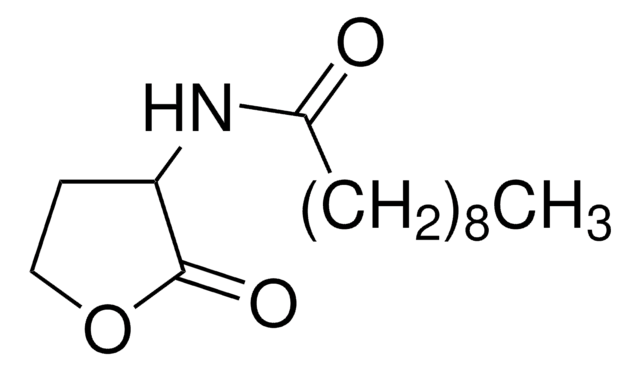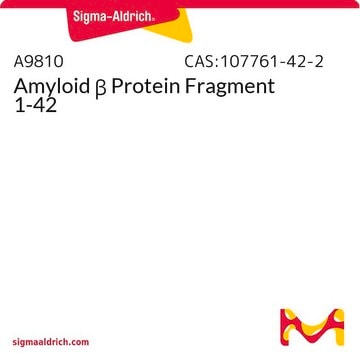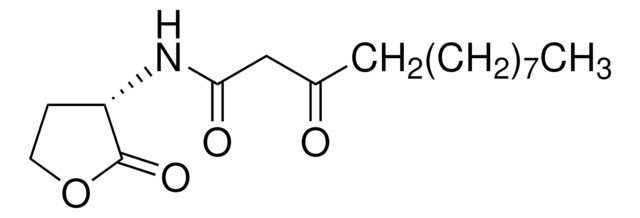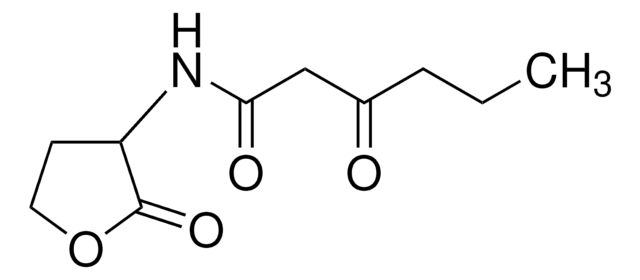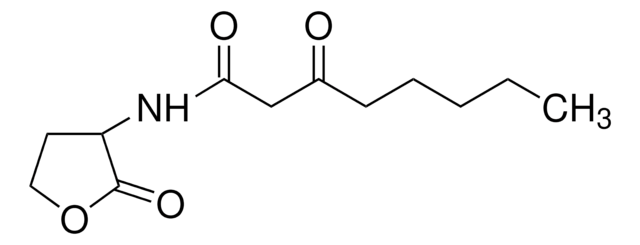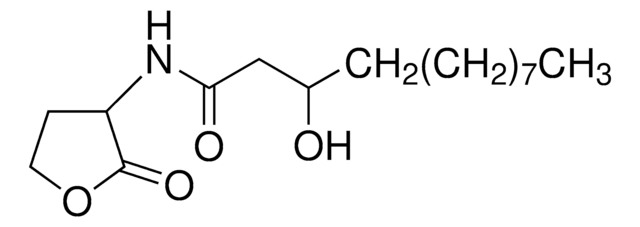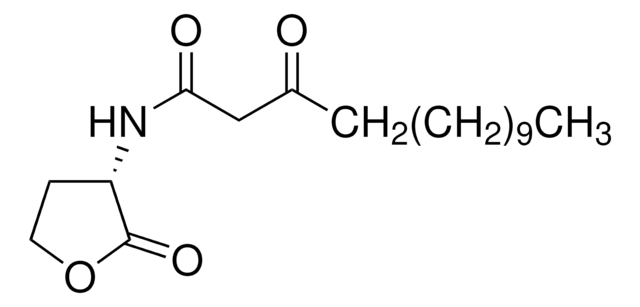09926
N-Hexanoyl-DL-homoserine lactone
≥97.0% (HPLC)
Sinónimos:
N-Caproyl-DL-homoserine lactone
Seleccione un Tamaño
193,00 €
Seleccione un Tamaño
About This Item
193,00 €
Productos recomendados
Ensayo
≥97.0% (HPLC)
Formulario
powder or crystals
técnicas
LC/MS: suitable
color
white to faint beige
mp
101-106 °C
temp. de almacenamiento
2-8°C
cadena SMILES
CCCCCC(=O)NC1CCOC1=O
CCCCCC(=O)NC1CCOC1=O
InChI
1S/C10H17NO3/c1-2-3-4-5-9(12)11-8-6-7-14-10(8)13/h8H,2-7H2,1H3,(H,11,12)
Clave InChI
ZJFKKPDLNLCPNP-UHFFFAOYSA-N
Categorías relacionadas
Aplicación
Acciones bioquímicas o fisiológicas
Código de clase de almacenamiento
11 - Combustible Solids
Clase de riesgo para el agua (WGK)
WGK 3
Punto de inflamabilidad (°F)
Not applicable
Punto de inflamabilidad (°C)
Not applicable
Equipo de protección personal
Eyeshields, Gloves, type N95 (US)
Elija entre una de las versiones más recientes:
Certificados de análisis (COA)
¿No ve la versión correcta?
Si necesita una versión concreta, puede buscar un certificado específico por el número de lote.
¿Ya tiene este producto?
Encuentre la documentación para los productos que ha comprado recientemente en la Biblioteca de documentos.
Los clientes también vieron
Filtros activos
Nuestro equipo de científicos tiene experiencia en todas las áreas de investigación: Ciencias de la vida, Ciencia de los materiales, Síntesis química, Cromatografía, Analítica y muchas otras.
Póngase en contacto con el Servicio técnico


